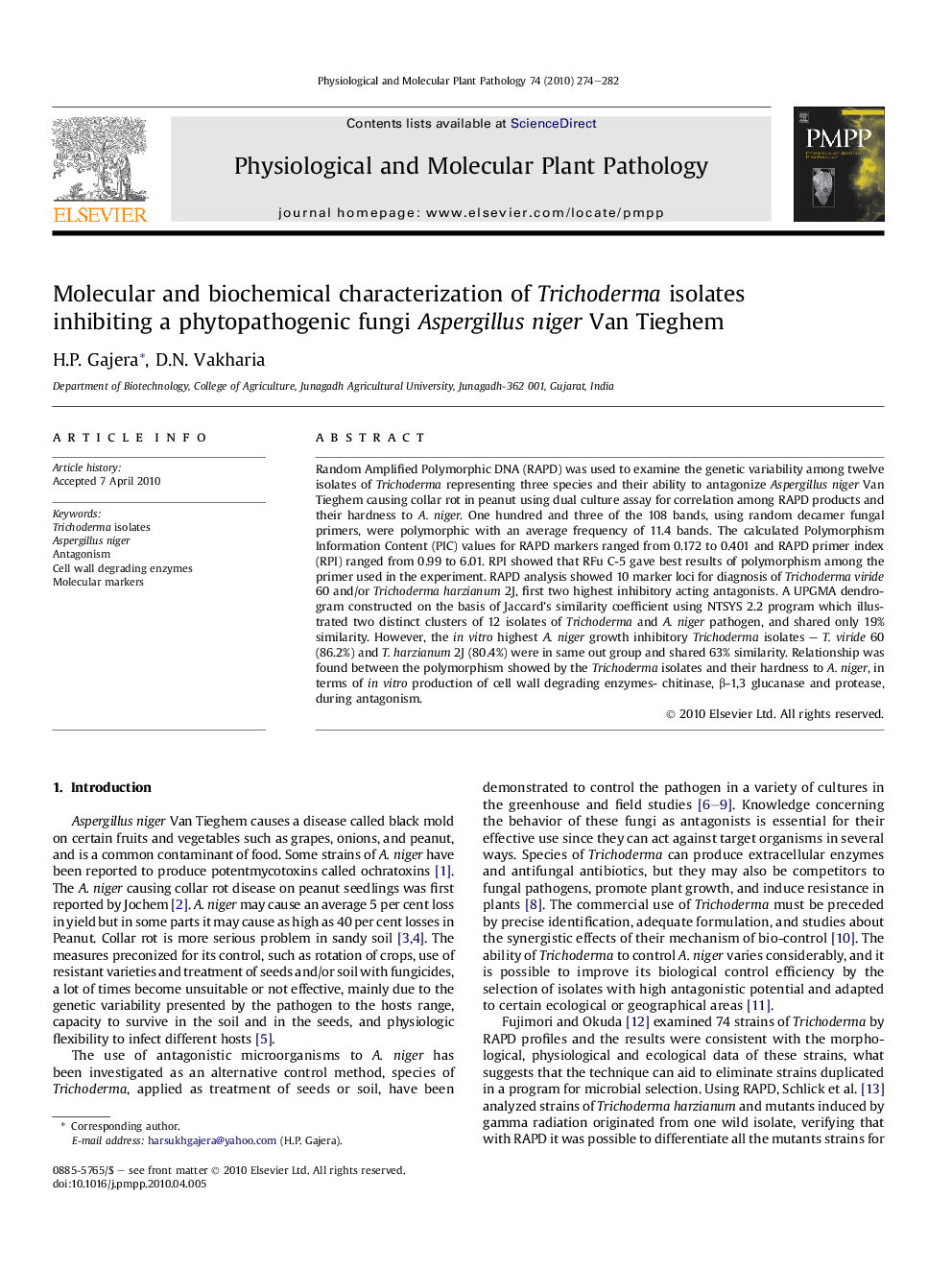| Article ID | Journal | Published Year | Pages | File Type |
|---|---|---|---|---|
| 2836547 | Physiological and Molecular Plant Pathology | 2010 | 9 Pages |
Random Amplified Polymorphic DNA (RAPD) was used to examine the genetic variability among twelve isolates of Trichoderma representing three species and their ability to antagonize Aspergillus niger Van Tieghem causing collar rot in peanut using dual culture assay for correlation among RAPD products and their hardness to A. niger. One hundred and three of the 108 bands, using random decamer fungal primers, were polymorphic with an average frequency of 11.4 bands. The calculated Polymorphism Information Content (PIC) values for RAPD markers ranged from 0.172 to 0.401 and RAPD primer index (RPI) ranged from 0.99 to 6.01. RPI showed that RFu C-5 gave best results of polymorphism among the primer used in the experiment. RAPD analysis showed 10 marker loci for diagnosis of Trichoderma viride 60 and/or Trichoderma harzianum 2J, first two highest inhibitory acting antagonists. A UPGMA dendrogram constructed on the basis of Jaccard’s similarity coefficient using NTSYS 2.2 program which illustrated two distinct clusters of 12 isolates of Trichoderma and A. niger pathogen, and shared only 19% similarity. However, the in vitro highest A. niger growth inhibitory Trichoderma isolates – T. viride 60 (86.2%) and T. harzianum 2J (80.4%) were in same out group and shared 63% similarity. Relationship was found between the polymorphism showed by the Trichoderma isolates and their hardness to A. niger, in terms of in vitro production of cell wall degrading enzymes- chitinase, β-1,3 glucanase and protease, during antagonism.
